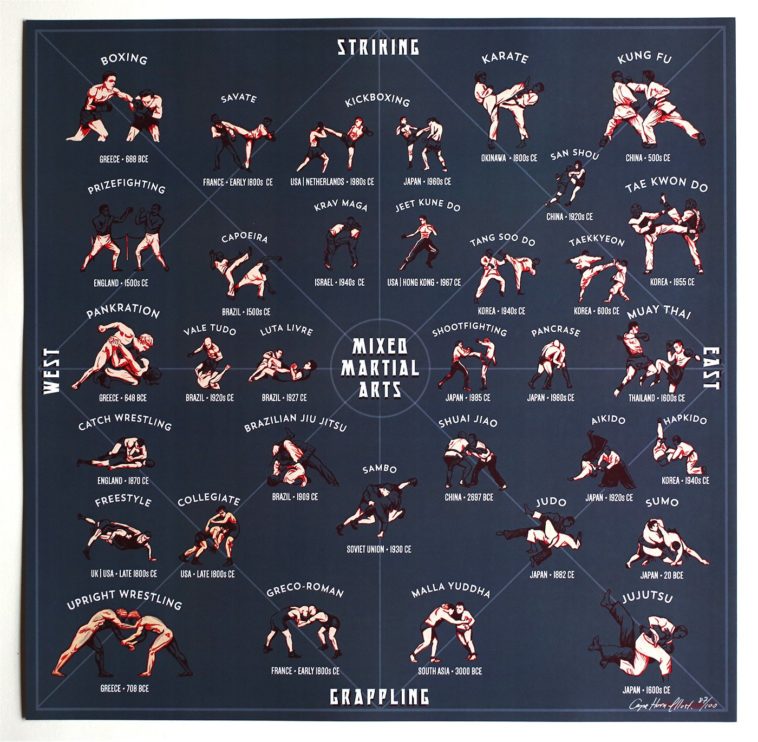Discover The Interesting Realm Of Martial Arts, Where Old-Time Customizeds Blend With Contemporary Performance
Discover The Interesting Realm Of Martial Arts, Where Old-Time Customizeds Blend With Contemporary Performance
Blog Article
Created By-Ryberg Francis
Step into the old world where martial arts were born out of necessity in varied areas. Cultures crafted special combating styles intertwined with historical contexts. Methods progressed over centuries with devoted technique and social exchanges. Today, modern martial arts mix standard components for maximum efficiency. Philosophically, martial arts emphasize technique, self-improvement, and consistency. Regard, humility, and balance are foundational concepts assisting specialists towards growth and strength. Explore the depths of this abundant background and philosophy to discover the profound impacts forming this enduring discipline.
Origins of Fighting Style
Martial arts came from various regions around the globe, progressing as sensible combat systems to defend against risks. These old battling styles were created out of need, with each society crafting techniques suited to their distinct atmospheres and obstacles. From the grappling arts of Jujutsu in Japan to the striking strategies of Martial art in China, martial arts were deeply intertwined with the historical, social, and cultural material of their particular cultures.
In Japan, the samurai class polished martial arts like Kenjutsu, the art of the sword, which later on evolved into the extra promoted type of Kendo. Meanwhile, in Brazil, Capoeira emerged as a mix of dancing and fight, created by enslaved Africans as a method to stand up to fascism. Each fighting style carries with it an abundant background and philosophy, showing the values and ideas of the people who practiced them.
As you explore the origins of martial arts, you uncover a tapestry of human resourcefulness, resilience, and the stubborn spirit of warriors throughout time.
Advancement of Techniques
Through centuries of technique and improvement, battle techniques within various martial arts have undertaken an extensive development. From ancient styles like Martial art and Martial arts to much more modern-day techniques such as Brazilian Jiu-Jitsu and Krav Maga, the development of techniques has been driven by a mix of social impacts, functional applications, and technical innovations.
https://elements-martial-arts-kid10875.topbloghub.com/33867413/begin-your-self-defense-trip-by-examining-the-complex-connection-in-between-fear-and-empowerment-and-find-the-tools-you-require-to-feel-great-and-in-control of this advancement is the cross-pollination of strategies in between different martial arts. For https://www.franchisetimes.com/franchise_news/premier-martial-arts-founder-wants-to-empower-children-s-lives/article_a82900bc-9354-11ec-9e75-f326eb742dad.html , techniques from typical Japanese Jiu-Jitsu were incorporated into the development of Judo by Jigoro Kano in the late 19th century. This mixing of styles has actually led to the growth of hybrid martial arts like Mixed Martial Arts (MMA), which combine components of striking, grappling, and entry techniques.
Furthermore, the development of strategies has been shaped by the boosting emphasis on efficiency and efficiency in battle. Professionals have constantly sought to fine-tune their methods through extensive training, testing, and competition, bring about the advancement of highly specialized and reliable fighting designs. On the whole, the advancement of techniques in martial arts mirrors the vibrant nature of combat and the ongoing quest for renovation and development.
Philosophical Structures
Checking out the underlying thoughtful principles of martial arts gives insight right into their core worths and leading ideas. At the heart of lots of martial arts self-controls is the idea of self-control itself. By training your body and mind to function as one natural device, you cultivate discipline that prolongs beyond the dojo or gym right into day-to-day life. This technique encompasses regard, humbleness, and self-constraint, shaping not just your physical capacities however also your character.
An additional fundamental thoughtful structure in martial arts is the idea of continual self-improvement. The journey of understanding a fighting style is continuous, with practitioners frequently striving to far better themselves, both literally and mentally. This focus on growth cultivates strength, willpower, and a growth frame of mind that can be applied to all elements of life.
Moreover, martial arts highlight the relevance of harmony and equilibrium. Techniques are made to utilize a challenger's energy versus them, highlighting the concept of yielding and rerouting pressure rather than satisfying it head-on. This ideology extends to interpersonal connections, advertising serene resolutions and good understanding. By embracing these thoughtful structures, martial musicians not only enhance their combat abilities yet also grow a way of living fixated individual development, respect, and harmony.
Final thought
To conclude, the history and philosophy of martial arts use a rich tapestry of tradition, technique, and self-improvement.
Consider instance the tale of Bruce Lee, who changed martial arts by mixing various styles and ideologies to produce his very own unique type of Jeet Kune Do.
With commitment and technology, martial artists continue to push borders and motivate others to reach their full capacity both in battle and in life.
